Pioneering Mount Barker
This year’s Young Gun Top 50 features Galafrey Wines from the oldest Great Southern subregion, Mount Barker.
We gathered every Australian gamay that we could find and set our expert panel of some of the best tasters in the business the task of finding the wines that compelled the most. All wines were tasted blind, and each panellist named their top six wines. Below are the wines that made the panellists’ top six from the tasting.
Our panel: Chris Ryan, Senior Wine Buyer, Trader House Group; Matthew Jensen, Group Sommelier, Farmer’s Daughters; Gilles Lapalus, owner and winemaker Maison Lapalus, Bertrand Bespoke and Maidenii; Justin Purser, winemaker; Ellie Ash, sommelier; Michael Aylward, Ocean Eight winemaker; Gabriella Rush, retail professional; and Sophie Darling, Darling Estate winemaker.

This was the top wine of the tasting for both Ryan and Darling, while Ash and Purser also had it in their top two and three respectively, and Lapalus also included it in his top-six. “Really engaging and pretty aromatics of violets, crushed rose, pomegranate, damson plum, crunchy fruit,” noted Ryan. “Some complexing whole-bunch aromas of wild thyme and spice.” Darling added: “Delightfully perfumed and lifted on the nose with forest fruits – somewhat intoxicating.” “This wine is giving off a youthful energy with vibrant alluring colour,” said Ash. “Sour cherry, cranberry, rhubarb and a herbaceous undercurrent round it out. With slightly chewy tannins and taut acidity, it would be lovely chilled and served with a salty Comté.” “The structure is on the light side with a very velvety mouthfeel, refreshed by balanced acidity giving the length to the experience,” said Lapalus. “Rich and brooding, with dark cherry and blackcurrants beneath a sappy spiced wildflower perfume,” commented Purser. “There is some serious structure with the honed tannins showing some stem influence. This combines well with the crunchy ferrous red fruit. It still has that gamay roundness, but it persists and should age well.”

Lapalus had this in top spot, with Ryan in his top two, Jensen in his top three, while Rush and purser also included it in their top-six selections. “Very perfumed, with floral notes of iris and violet, and spicy black pepper aromas on the finish. A wine of great complexity which has potential for evolution but is totally approachable now,” said Lapalus. “Good depth of colour, moves into deeper purple hue,” noted Ryan. “Some whole-bunch interest, wild thyme, fennel, rhubarb. I like the layers and interest: opens up with air and moves beyond just simple red fruit flavours into darker red and event some blue fruits. I like this more concentrated ‘serious’ expression.” “This is rich and intense with layers of spice, fruit and oak,” wrote Purser. “The crunchy red and black fruits are dense, yet plush with lots of extract, structure and length.” “The tannins aren’t overwhelmingly green, but end up being quite silky,” noted Jensen. “The fruits are there but more in the red spectrum. Cherry and raspberry dominate as well as possessing a raspberry leaf characteristic. What makes it work though is that the fruit isn’t overly sweet, they come out on the dry side which really lends itself to the green notes coming through the wine.” “Bramble bushes, lavender, eucalypt, forest floor, tomato bushes, violets and crunchy tart cherry,” noted Rush, adding: “I liked the earthy undertones being carried by a more powerful structure. Makes me think what benchmark gamay actually is!”

Ryan and Rush had this in their top-three wines, and it also featured in the top-six selections of Jensen, Ash and Darling. “A beautiful, engaging nose,” said Ryan. “Sappy red fruits, macerated strawberry, watermelon, with slightly confected notes of Allen’s red frogs alongside herbal notes of sandalwood and cardamon that provides added interest.” “The colour shined with red brilliance like a beacon,” noted Rush. “Hot cross buns on the nose with all the yeasty, cinnamon, buttered toast and sultana aromas. Dried apricot, cherry liqueur, ginger, starburst cherries and a confectionary carbonic-macerated pop ignites your tastebuds.” Jensen wrote: “The sweetest of all the gamays tasted today for me – it’s all about the fruit and chocolate. An incredibly rich wine for the varietal. There’s not much tannin or any sort of green elements to it, but that’s what I quite liked. This doesn’t need food, it’s one to enjoy on the balcony and have a great time. Cherry Ripe and red currant spice. If you gave me a plate of dark chocolate and a glass of this I would have a great time.” Ash: “Bright purple fruits – plum, blueberry and black currant feature in this wine. This dark, dense gamay has plenty of warming spice. Lots of extract and generosity on the palate with aromatic lilac and violet. Great length, chewy tannins and elegant structure.”

This came in top spot for Ash, with Ryan and Rush also including it in their top-six selections. “This Gamay is all about the balance of aromatics and structure,” noted Ash. “There is a subtle underlying minerality laced with white pepper, cardamom and dense brambles. Reminiscent of a cru Beaujolais with powdery tannins and alluring acidity, this wine is evidence that Australian producers are passionate about gamay. The fruit is dark and brooding with black cherry, stewed red currants and a salty, mineral backbone.” “A hint of burning incense, ashy and sweet, with vanilla bean and charcuterie,” noted Rush. “Christmas ham, dried thyme, cherry jam, black pepper. It’s a brilliant foodie red and excites me to pair with all the native Australian fare we champion.” “Really pretty aromatics with violets, crushed rose, pomegranate, and succulent crunchy fruit,” said Ryan. “There’s a slightly confected red liquorice quality. Best served just cool but not cold.”

This was Jensen’s top pick, while it came one spot back for Lapalus. “My wine of the day, it is everything I can want from a modern gamay,” said Jensen. “Gamey meats, cranberry, sweet black cherries, pepperberry leaf. I hesitate to say it speaks of its ancestral home in Beaujolais, but I think it hits so many marks and the structure is outstanding. It’s drinking well now and it’ll drink well into the future.” “A lighter style signalled by a light ruby red with purple hue and a good limpidity,” wrote Lapalus. “The nose is dominated by red fruit going towards floral and spicy notes of peony and poppy flowers. The soft attack introduces a light structure, some red fruit aromas and a creamy finish refreshed by a balanced acidity. Vin de soif to have chilled with some nice charcuterie.”

This was the wine of the day for Rush, while it also featured in the top-six lists of Purser and Aylward. “I think gamay should always start fun and end resolved and this did exactly that,” said Rush. “Your palate opens with the inviting citrus fruit aromas of blood orange, acacia and grapefruit, is quipped curious by the developing river mint, lavender, violets and leatherwood honey and then soothed with infantile delight over the resolution of cola, vanilla, cherry and caramel. It took you there comfortably with all the confidence of maintained acidity, fruit development, fine grain tantalising tannin and a great flavour bomb. A star of the show and can’t wait to see where it goes.” “The perfume had an intoxicating effect through the senses,” noted Aylward, “This was a standout for me because it had nougat characters. I could taste one of those sesame bars that I used to eat a long time ago. There was a mix of various red fruits, but for me, that nougat characteristic was the highlight of this wine.” “A pale scarlet tone with just ripe cherry cola fruit and some bubble-gum pop,” noted Purser. “The woody spices give a savoury edge and show off the crunch of fresh red cherry and plum. One to put in the fridge for a bit and drink young.”

Darling and Ash had this in their top three wines and it also appeared in Ryan’s top six list. “An elegant example of gamay with plush fruits, dried thyme and pepperberry,” noted Ash. “Lifted and perfumed nose of jasmine and tea leaf is complemented by the taut acidity and fine tannins. Fresh strawberry, raspberry and red cherry interplay with the savoury aromas of tomato leaf and petrichor.” Darling noted: “Forest fruits with a little hint of fresh charcuterie. The palate had a wonderful savoury vibe with a little leather to it. Great shape and beautifully persistent tannin.” “Sweet, riper red fruit, with plum and red apple skin,” wrote Ryan. “Engaging florals of violets and lavender. Some fruit concentration supportive tannin that helps move the wine beyond simple pure fruited. This leans more towards cru Beaujolais and would be a good candidate for some bottle age.”

This featured in the top six selections of Lapalus, Ryan and Aylward. “Polished aspect with good limpidity, and a garnet red with purple hue,” noted Lapalus. “Expressive nose with a great mix of spicy, peppery, and floral notes of peony, poppy and violet. A well balanced wine with a fine structure supported by fine tannins and a good presence of red fruits and floral aromatics.” “Quite effortless, engaging, floral aromatics,” commented Ryan. “There’s a brightness to the ripe red and tart red fruits – it’s crunchy almost edgy, lifted. Sits close to the pinot noir end of the spectrum and would impress most people if served alongside roast chicken with tarragon.” Aylward commented, “You could not fault this wine and it could easily have come in at number one.”

Aylward had this as his wine of the day and Rush also included it in her top six selections “Sometimes in wine we talk about high lifted notes which helps describe how the perfumes travel through the senses and this had plenty,” Aylward said. “I find these levels of lifted notes pretty exciting when I see them in our pinot noirs.” “This was lifted and bright with a sweeter finish,” added Rush. “Dark cherries, roasted hazelnut, sweet cherry cola, baking spices – the kind that ends up in your banana bread, grapefruit and cranberry. If you’ve ever had the privilege of trying coca cola post mix syrup before it’s carbonated, this was it, and I loved it!”

“The bright vermillion hue, lifted raspberry and plum are the drawcards to this wine,” noted Purser, placing this as his top wine of the tasting. “Pure fresh fruits on the nose are spiced up with notes of fresh hops, anise and violets. Crunchy cranberry and blackcurrant come through on the palate with the fine tannins forming a salivating latticework of finesse. It is impossible not to go back for another taste.”

This was Purser’s second placed wine, and also appeared in Darling’s top-six list. “Veiled with some matchstick reduction, it opens to reveal a tapestry of earthy woodland spices, rose petals and tobacco flowers,” wrote Purser. “The deep vermillion hue lines up with the lush red cherry and plum flavours. This is well weighted, rounded and fine. It lingers and satisfies.” “Instantly intriguing in the glass – a subtle melody of fennel and bay leaf spice on the nose before showing off deep fruit with hints of blackcurrant and sweetly perfumed violets,” noted Darling. “The palate has a wonderful balance of sweet and savoury; delicate and lifted but with a lovely kick of tannin at the back of the palate rounding it off perfectly. Overall, a very elegant rendition of gamay. Perfect to enjoy on its own in quiet contemplation.”

This was among the top two wines of the day for Rush, and Jensen included it in his top six selections. Rush wrote: “So pale in contrast to the others! This was the chillable, almost rosé level gamay, gifting mushrooms, liquorice, ginger, leaves slowly spoiling on the moist forest floor, Campari, rhubarb and fresh strawberry. So smashable and refreshing, I didn’t want it to end and so versatile in its lightness.” “Spice and red fruits, it sounds like a simple combination it’s very complex on the palate, not to mention the longest finishing wine out of the gamays,” commented Jensen. “It immediately bought cherry and strawberry Starburst to mind, which sounds like a lot and way too confectionary, but the spice mellows it out, along with the gentle red pepper. Duck, veal, a simple jus – it’ll hold for the whole meal and you won’t get bored of it.”

This came in second top spot for Jensen. “Meaty is the first word which comes to mind. It has a jerky like quality, that cured and dried meatiness, but also a grilled note. It’s the smokiness that really adds an extra layer of complexity to the wine. Traditional fruits with red cherry and red currants, solid tannins as well. It’s definitely a food wine. Pull this out at a BBQ and it’ll go down an absolute treat.”

“This Gamay gives intense tones of deep, earthy, forest – I love seeing a more serious and savoury treatment,” said Darling, placing this in her top two wines. “The nose hints at a little darkness to come, mushrooms, and freshly dug soil. In the glass is an excellent balance of tannin and acid – gentle and extremely pleasant. A very autumnal gamay. Would love to sit down and drink it with a rustic chicken pie by the fire in my favourite gastro pub.”

Aylward had this as his second top wine of the day. “This was fantastic! It had a varied red fruit spectrum and a captivating perfume. Strawberries, raspberries, cranberries and hints of violets. The palate weight was excellent and a standout feature in the lineup today. This would be the ideal entry wine to get people drinking lighter reds. Drink very slow in a huge glass and enjoy every drop.”

“Showing plenty of raspberry fruit characters,” Aylward described, placing this among his top three wines of the tasting. “A little confectionary, like the old boiled raspberry lollies. The perfume was off the charts with racy raspberry and spice. The acidity with these flavours really brought this wine to life. A really well made wine. If you can’t enjoy this, then gamay’s not for you!”

Lapalus included this in his top three selections of the tasting. “The nose shows high toast but fine wood of nice oak. The oak character presents in the mouth again but again in a noble way as the wine is supported by a great mouthfeel, a balanced acidity, very soft tannins and a creamy finish – maybe enhanced by the fine wood. An ambitious wine which, as the oak integrates, has the elements to produce a fine bottle.”

Ash and Lapalus both included this in their top six selections. “A juicy and jammy example of the variety, with bright carbonic aromas,” commented Ash. “White pepper, pomegranate and stewed red cherry with powdery tannins form the basis. It’s both vegetal and earthy while showing elegance on the palate.” “The nose is dominated by fresh peony and poppy flowers, going towards more vegetal notes and grape stem,” noted Lapalus. “First impression in the mouth is soft with a medium body, low acid creating a very creamy mouthfeel. The overall is balanced and supported by fine tannins in the length. With its lower acid level, this wine could be interesting for some pairing, including Asian dishes.”

This was among the top six wines on Jensen and Aylward’s lists. “This is a Thanksgiving wine first and foremost,” began Jensen. “Showing my background a little here, but it contains all the flavours you associate with the meal, along with the absolute ease of drinking it which is usually important when you’ve got all the family around! White pepper spice, eucalypt, grippy tannins. Boysenberry and cherry dominate the fruit spectrum and it comes out as jammy, but not sweet. Turkey, cranberry sauce, and this, would be a match made in heaven. Drink it now or put it away, it’ll be interesting to look at for a long time.” “This particular gamay stood out as it was slightly deeper in colour and had nice red currant fruit flavours,” said Aylward. “There was a great amount of spice as well. The palate weight of the wine is perfect: the fresh acidity and fruit worked really well to bring structure to the subtle tannins.”

“A very nouveau take and absolutely delightful in the glass,” saiid Darling, placing this in her top six wines. “The nose is bright, jubey and slightly pastille – everything that is joyful about this style of gamay. On second look it builds a little, some bramble on the nose that gives way to a lovely bit of depth on the palate with notes of raspberry, pomegranate, and an alluring acidity that almost feels like it might peak too high before resolving nicely and making you want to go back for more. I would love to put a little chill on this and enjoy it at a summer picnic with friends and a healthy serving of joie de vivre.”

“Gazing into the deep colour and taking in the array of aromatic features, this wine grabs your attention,” described Purser, placing this among his top six wines from the tasting. “This is a serious gamay. It is deeply scented with layers of potpourri, carbonic maceraction lift, earthy spices and fine oak. The dark fruit is bright and fresh, well weighted and refined. It has a line and length met with good balance. This will age well.

“Tea leaf, dried chamomile, leather and tobacco compliment the sour red fruits on the palate,” wrote Ash, placing this wine among the top six wines of the day. “This fuller bodied gamay shows a dark, brooding profile on the nose with black cherry, stewed berries and a saline minerality. The lean and driving acidity is offset by the chewy tannins. This serious and nuanced gamay is asking for some fried padron peppers and capocollo.”
Few genuinely noble wine regions have been sullied as much as Beaujolais has. From plain old everyday rusticity, where farmhouse wine tasted more of the former than the latter, to one of the most baroquely ornate exercises in marketing crassness, Beaujolais has been very diligently dulling its lustre for decades. And in the process, its name will remain ever tarnished to some, along with its emblematic grape, gamay.
In fact, gamay has been victimised for some time, with it anecdotally vanquished from Burgundy proper in the 14th century by the irate Duke of Burgundy, who described it in eerily Trumpian fashion as “a very bad and disloyal plant.” An objection to gamay’s earlier ripening and abundant yield was apparently a slight on the serene and noble complications that pinot noir presented. And, no doubt, the more refined results. As the story goes, gamay was exiled further south to take up refugee status between Mâcon and Lyon, sandwiched between the Northern Rhône and the Côte d’Or, and between the aristocratic syrah and ethereal pinot noir.
Beaujolais, and by extension, gamay, enjoyed some little success in the following centuries, establishing itself not so much as subservient to Burgundy, but rather just differentiated. Somewhat more carefree, chattier, less snobby, but decidedly valid. Crus were mapped and the differences between villages was well understood. Gamay never trod on pinot noir’s gleaming big-buckled court shoes, but it certainly made its more bucolic mark, and was celebrated for it.
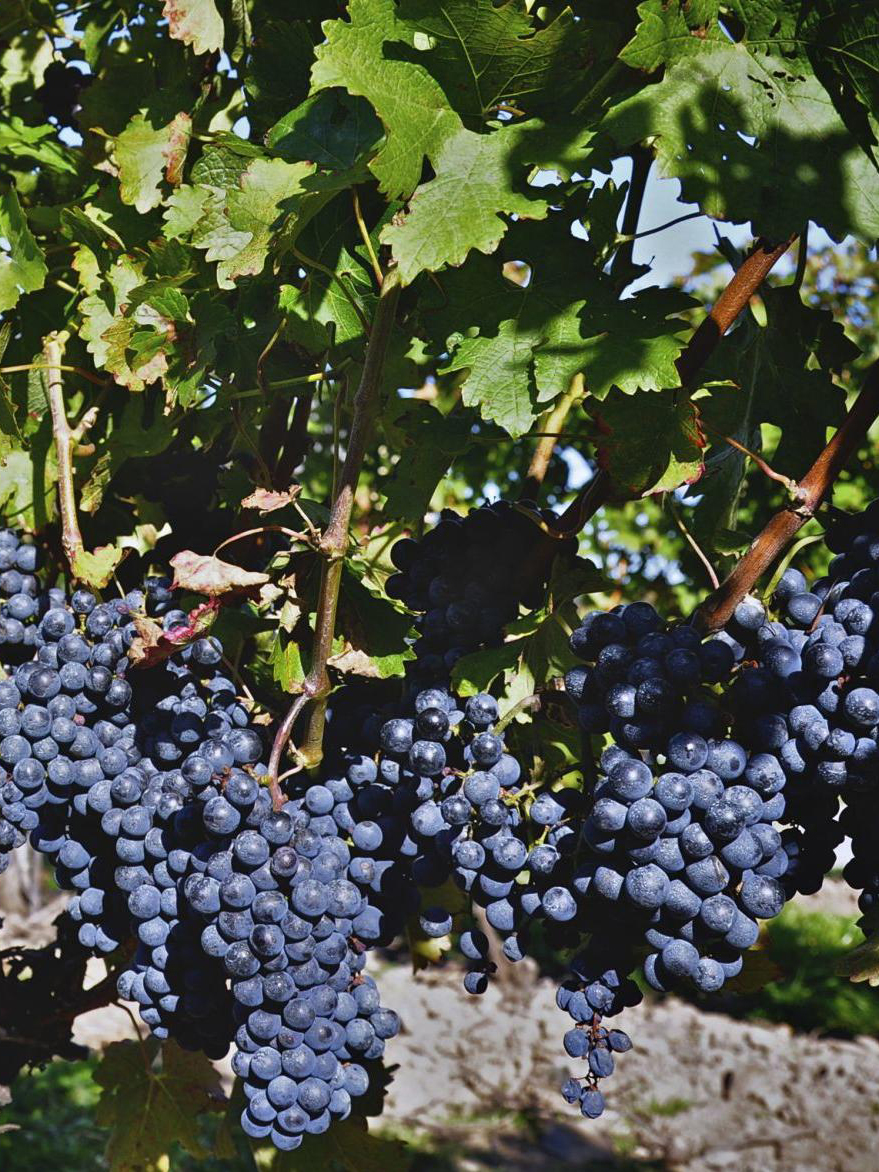
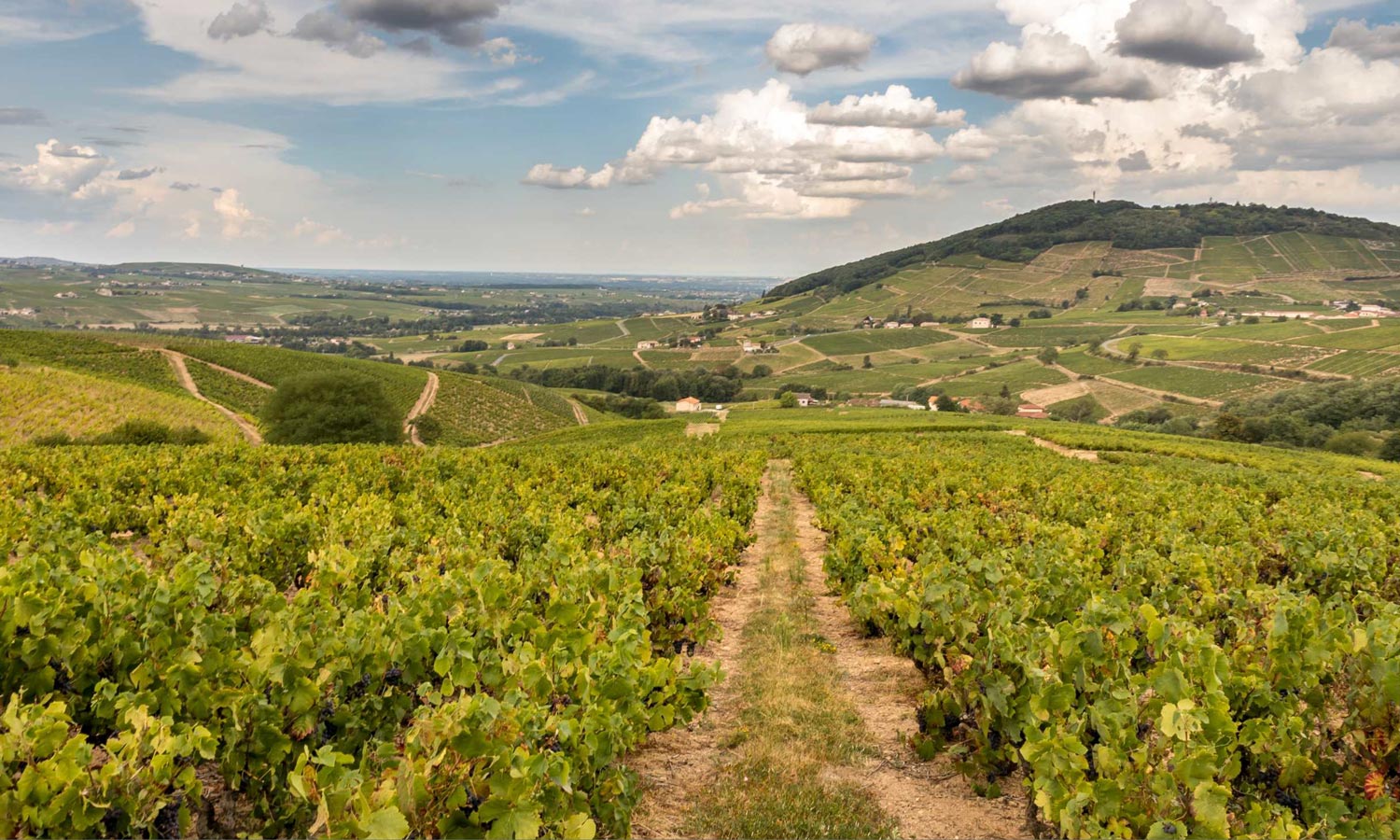
Come wine’s mid-20th century industrial revolution, and like many regions of popular appeal, Beaujolais began to homogenise its output. Carbonic maceration in tank was widely used (whole bunches and berries fermented in a closed tank), often producing poppy and confected wines. It became a popular, reliable and economical supermarket product, largely stripped of individuality. This image, and one of the wine world’s biggest marketing ‘successes’, in Beaujolais Nouveau, saw both grape and region sullied seemingly beyond repair. Well, in the eyes of serious wine drinkers at least.
For those not familiar, Beaujolais Nouveau was a marketing device to celebrate a race to market of just-fermented wine. This was initially a literal race to Paris, but later evolved into an international celebration on the third Thursday in November, where unfinished wine was airfreighted around the world to be devoured in oft-dissolute Dionysian celebrations. Nouveau’s heyday was in the 70s and 80s, long before food miles became an issue of conscience. Its success was staggering, but it was built on the flimsiest of foundations, and it flickered for a while before fading back to the novelty it always was.
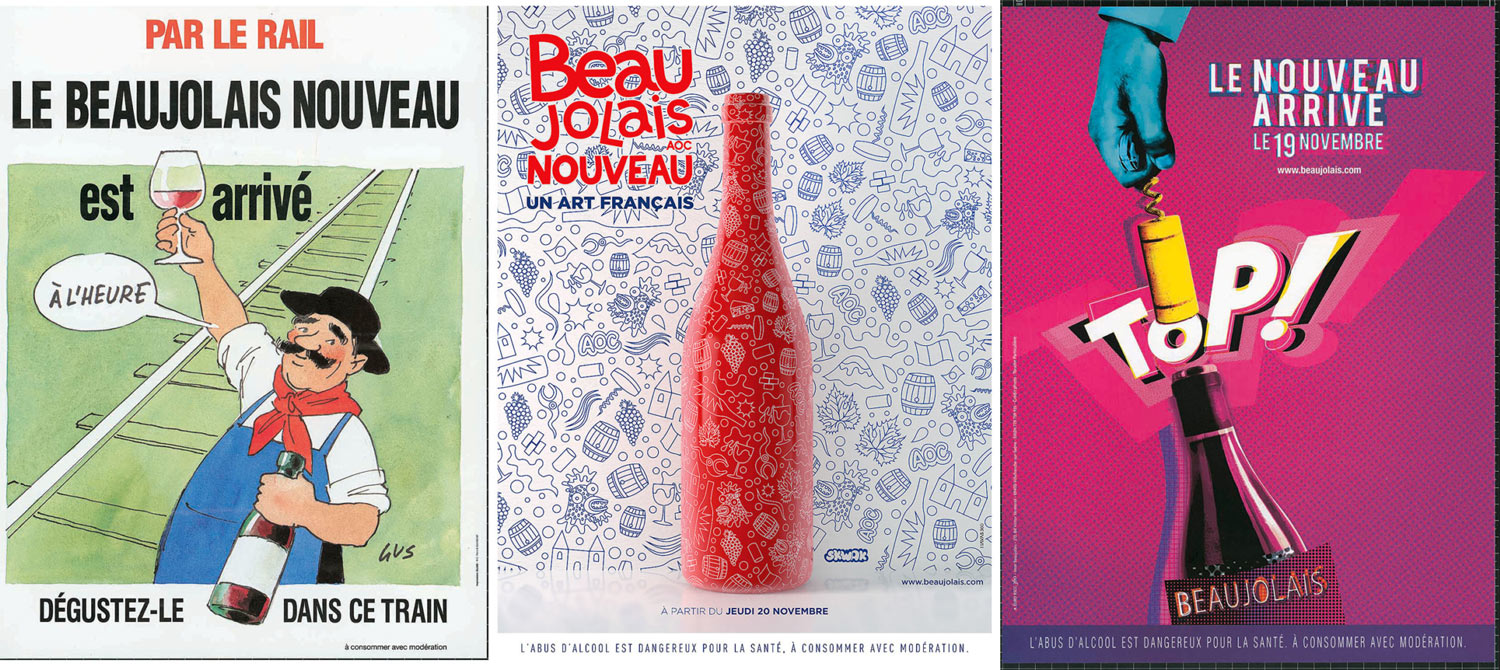
In the full swing of Beaujolais’ decline, while the world merrily danced on its self-dug grave, a revolution was quietly gathering momentum. Celebrated as the Gang of Four (the legendary importer Kermit Lynch coined the phrase for the producers he was importing to the US – there were more manning the barricades, in other words), Marcel Lapierre, Jean-Paul Thévenet, Jean Foillard and Guy Breton were disciples of Jules Chauvet and sought to express the real terroir of the region. They employed organic farming, old vines, careful sorting of berries and minimal or no sulphur additions. Yep, natural wine – Chauvet is the man-god of natural wine.
One of the great advantages of a wine region so utterly soiling itself and then wrapping itself in tinsel and persisting to dance once the music has stopped, is that it provides a wonderful shield for those with a little more insight. For quite some time, a raft of genuinely superb, terroir-specific wines has been vastly undervalued in the market. Yes, that’s right: undervalued French wine, and in Australia, too. Though, that obscuring reputational cloud is clearing, with even those most poisoned by Beaujolais’ nadir easily swayed by what is now more commonly found in the glass.
That increased clarity, and for those hip to the revolution back in the 80s and 90s, has seen a renewed interest in both region and grape. The groundwork laid down by the maverick Beaujolais artisans of the 80s and 90s (the heartthrobs are still going strong, and they have been joined by a shimmering galaxy of new stars, too) has been somewhat infectious, with a global interest in both method and material.

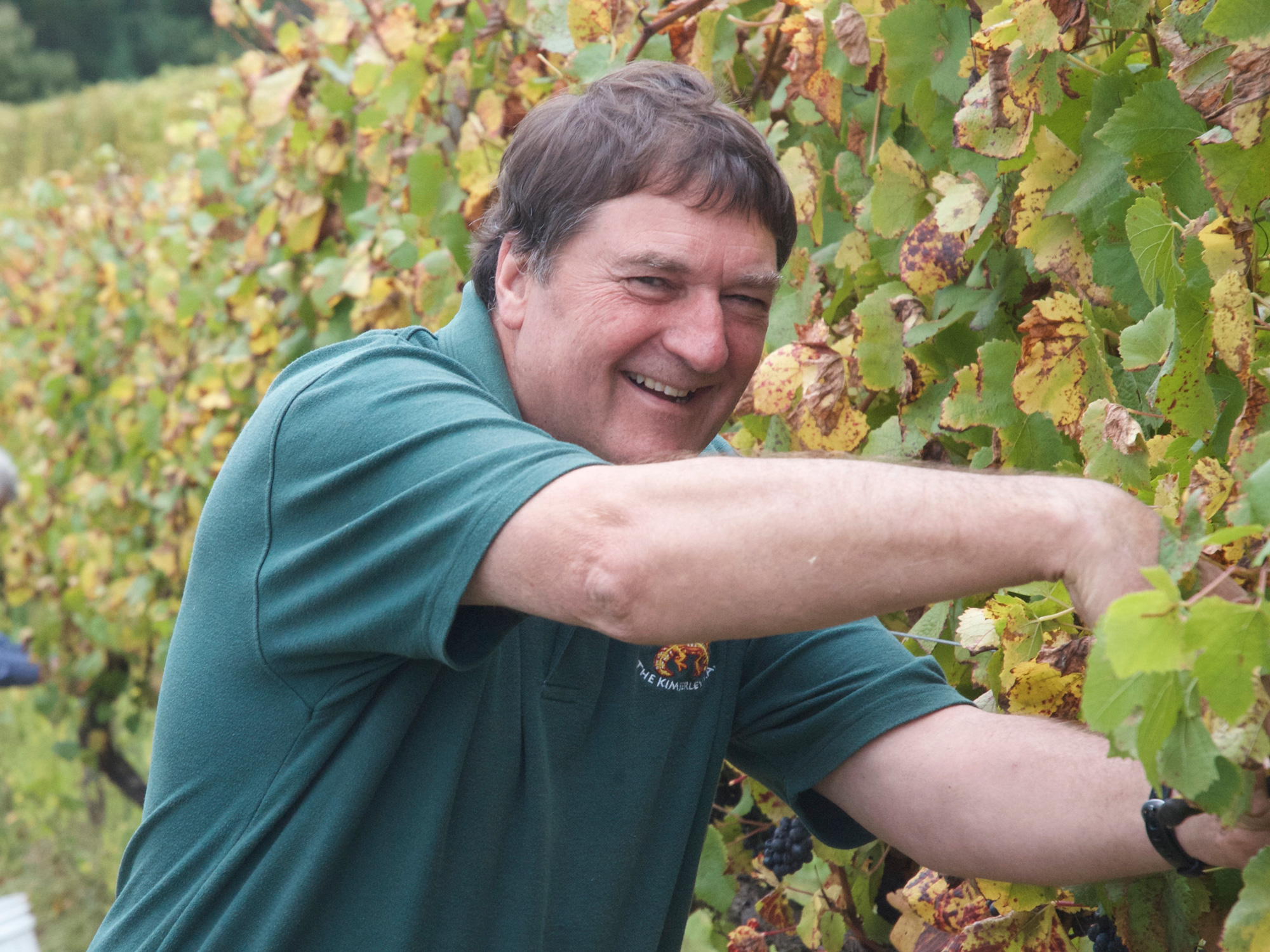
“I have an old friend on the Mornington Peninsula – David Lloyd from Eldridge Estate – who spent the best part of his career talking up gamay. I thought at the time he was mad, but I should have listened to him… we could have an acre or two of 10 year old vines producing fantastic wine now!”
It’s thought that the legendary wine impresario Len Evans planted Australia’s first gamay, committing vines to soil on his Hunter Valley ‘Loggerheads’ property in the mid-1970s. That was only a few rows, with Bass Phillip’s Phillip Jones planting a little, though not a lot, more in 1998, and Sorrenberg’s vines planted around the same time. Eldridge Estate, somewhat of a gamay specialist, planted theirs around 2000.
Until recently, the gamay grapes from Loggerheads in the Hunter had gone into a Tyrells special release gamay. That was, until Miranda Kerr purchased the property in 2020. For the time being, those grapes are being made into a rosé for the US market. The vines are still there, so hopefully in time we will see a return of the Tyrrell’s special release gamay.
Gamay is not heavily planted in Australia, but its tendrils have reached seemingly all corners: Tasmania, Canberra District, Tumbarumba, Margaret River, Geographe, North East Victoria, the Port Phillip dress circle of Geelong, Macedon, Yarra Valley, Mornington Peninsula and Gippsland – but far and away the region producing the most expressions at the moment is Adelaide Hills, which accounts for probably a third of the gamay bottlings in Australia.
It is quite the buzz variety, with progressive winemakers, both established and newly minted, pursuing the variety with great vigour. In the last five years, the number of gamays bottled in Australia has approximately doubled.
So, five years after our inaugural Deep Dive into gamay, it’s an apt time to again cast our net across the Australian gamay landscape…

Our panel: Chris Ryan, Senior Wine Buyer, Trader House Group; Matthew Jensen, Group Sommelier, Farmer’s Daughters; Gilles Lapalus, owner and winemaker Maison Lapalus, Bertrand Bespoke and Maidenii; Justin Purser, winemaker Purser Wines; Ellie Ash, sommelier; Michael Aylward, Ocean Eight winemaker; Gabriella Rush, retail professional; and Sophie Darling, Darling Estate winemaker.
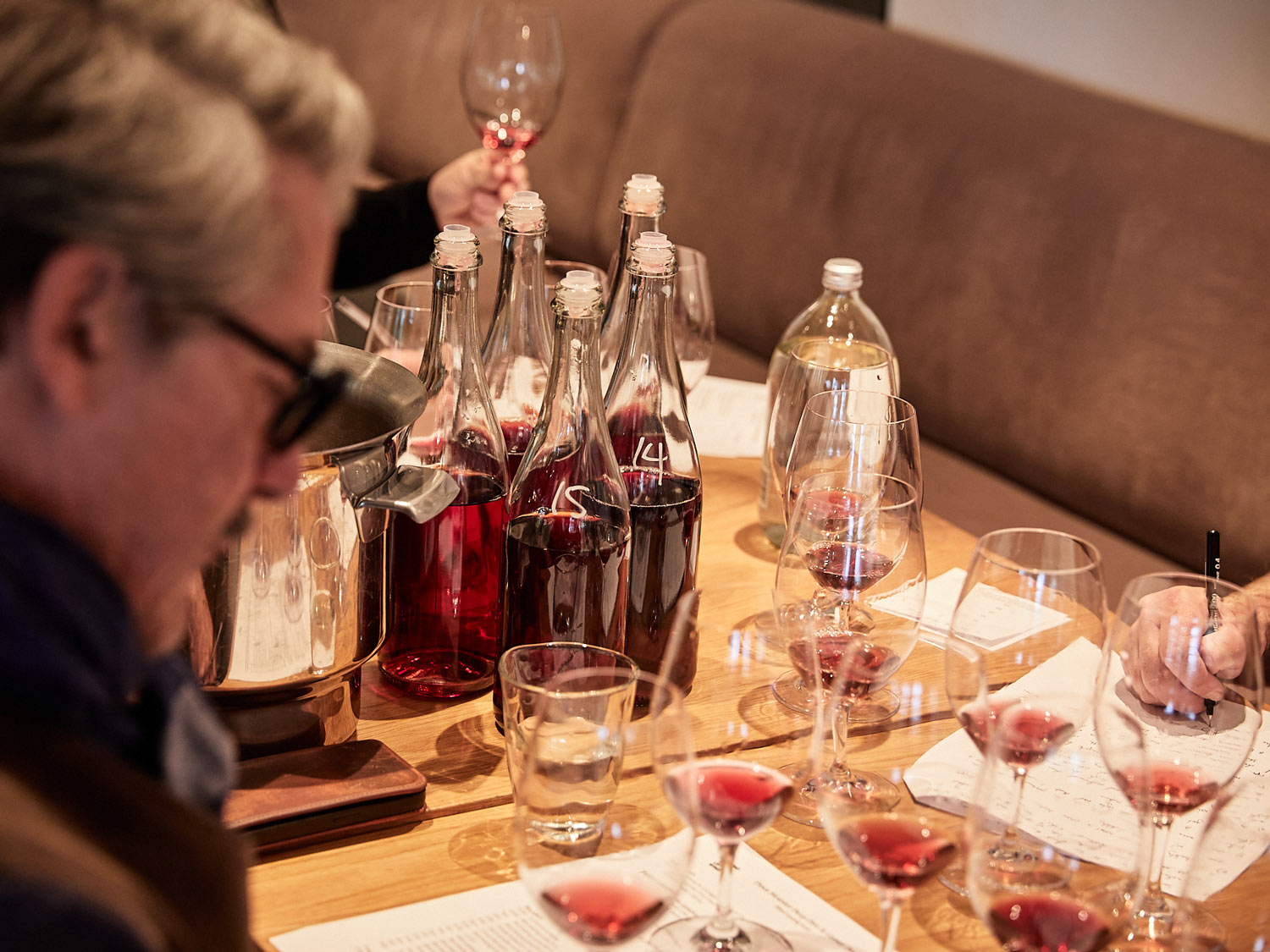
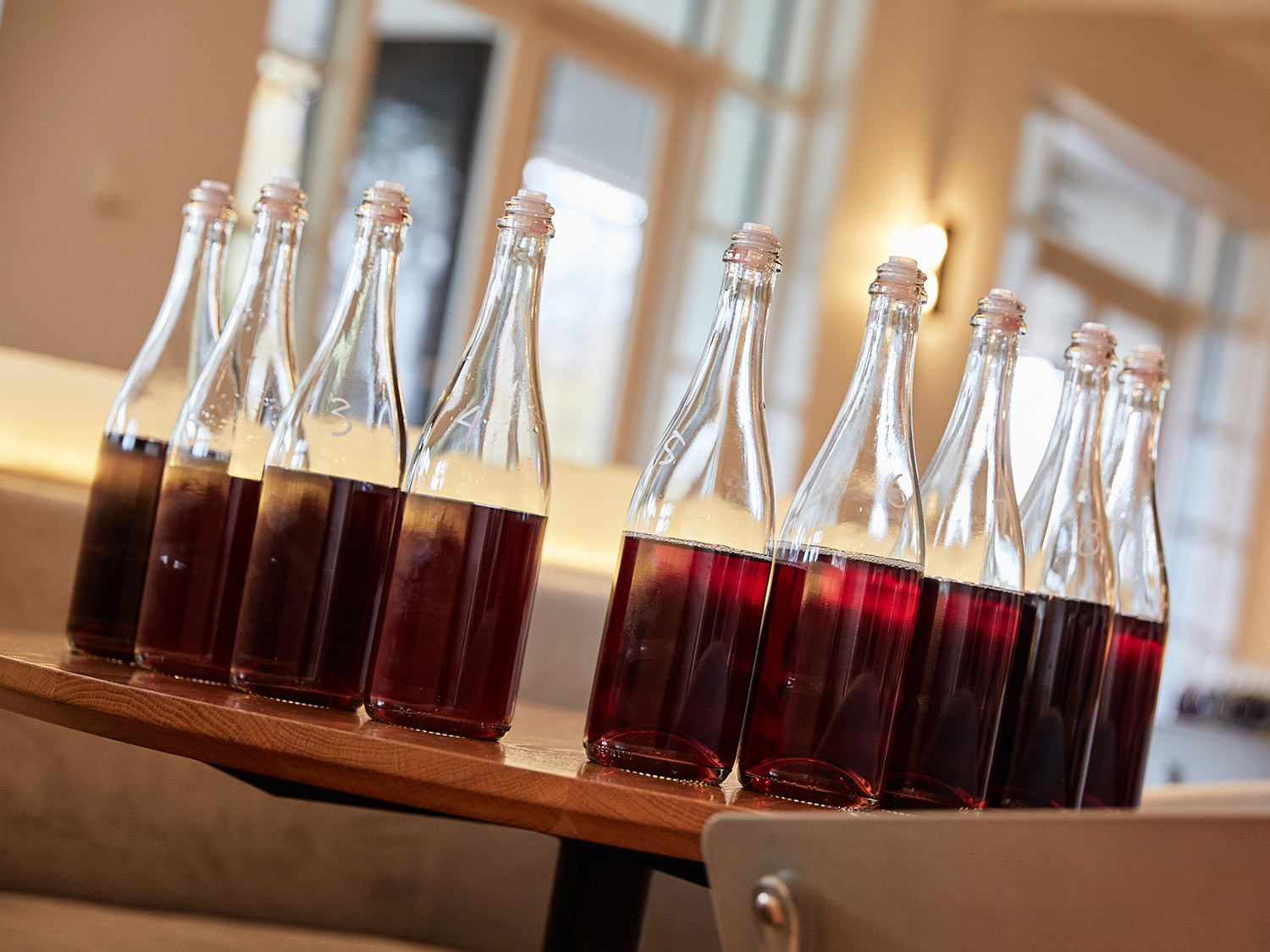
“There were so many really delicious wines here today that are well suited to the market,” said Ryan. “I suppose the risk is some were maybe overtly fruity and simple in a way – that kind of got a bit tiresome after a while. The best ones had tannin as an element, or some ‘bunch’ character, or something else that’s not just jubey red fruit. But, on the whole, it was pretty enjoyable!”
“There was a lot more commonality in terms of what we’re experiencing in the glass,” noted Darling. “Generally everything looked really good. Our family has been growing gamay for almost 30 years, so I thought it was really cool to see that commonality and expression across the different wines.”
Though Lapalus offered that the difficult part of the tasting was a sense of ‘sameness’, “After a while you just see the same again and again. But then, boom, too much stem; boom, too much oak; boom, too much fruit character; too much ‘carbonic’. So that’s the winemaking thing that appears on top of the fruits. It made it so hard to say what region the wine was from.”
“I was surprised how few full-on neauvou-styles there were. I was expecting to see a few more.”
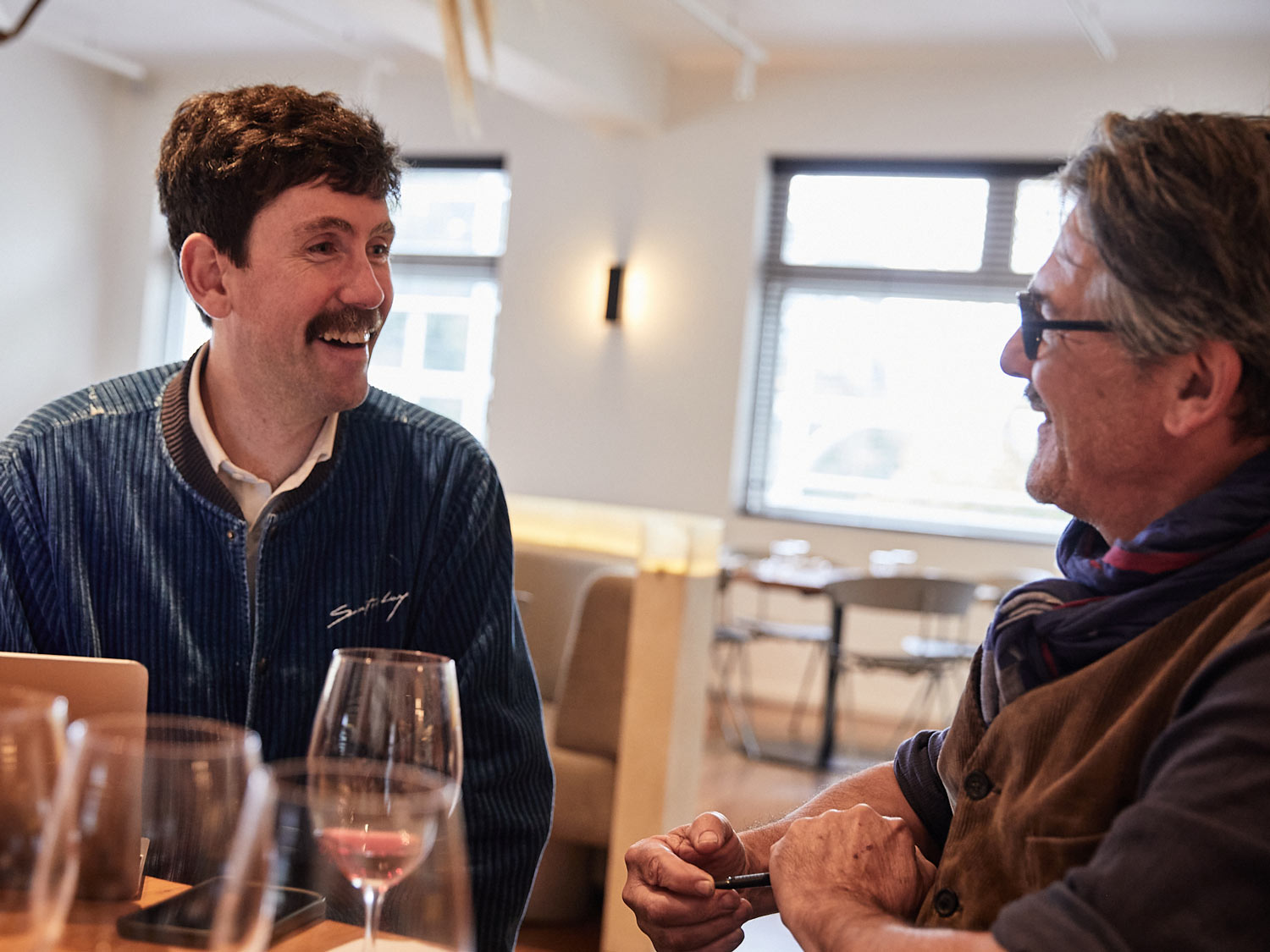
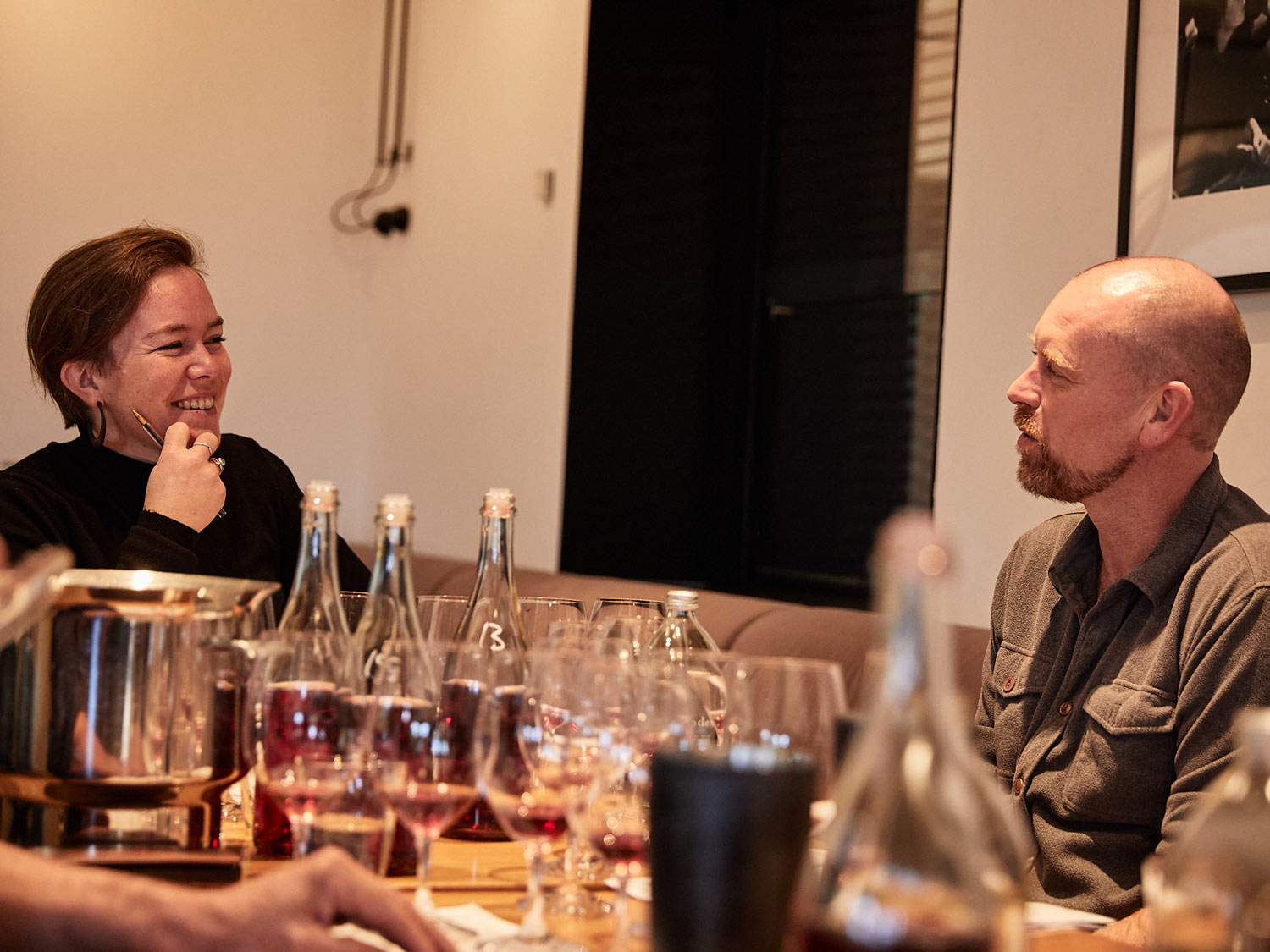
“I think it’s funny, you’d see one wine and you just go, ‘yep, I’d smash a glass of that as an afternoon drink no problem’, and then the next wine was like this big, brooding, structured, oak matured, you’d think: ‘wow, I need to lay that down for a few years.’”
Purser added his thought on the hand of the winemaker in the wines: “I think it’s funny, you’d see one wine and you just go, ‘yep, I’d smash a glass of that as an afternoon drink no problem’, and then the next wine was like this big, brooding, structured, oak matured, you’d think: ‘wow, I need to lay that down for a few years.’ So, just that diversity I think was really interesting, but overall I think the wines were strong.”
“Even the light wines, I’ve noted some of the light ones well,” replied Lapalus. “I’d like to drink these wines.”
But Jensen noted, “I was surprised how few full-on neauvou-styles there were. I was expecting to see a few more.”
“The minerality in all of the wines was really impressive,” said Ash. “I think that in ‘inner-north hospo’, gamay is so trendy – everybody wants it and people are really open to it, and I think Beaujolais is becoming more inaccessible and people are much more open to like local gamays and that line of minerality is really interesting as a varietal character.”
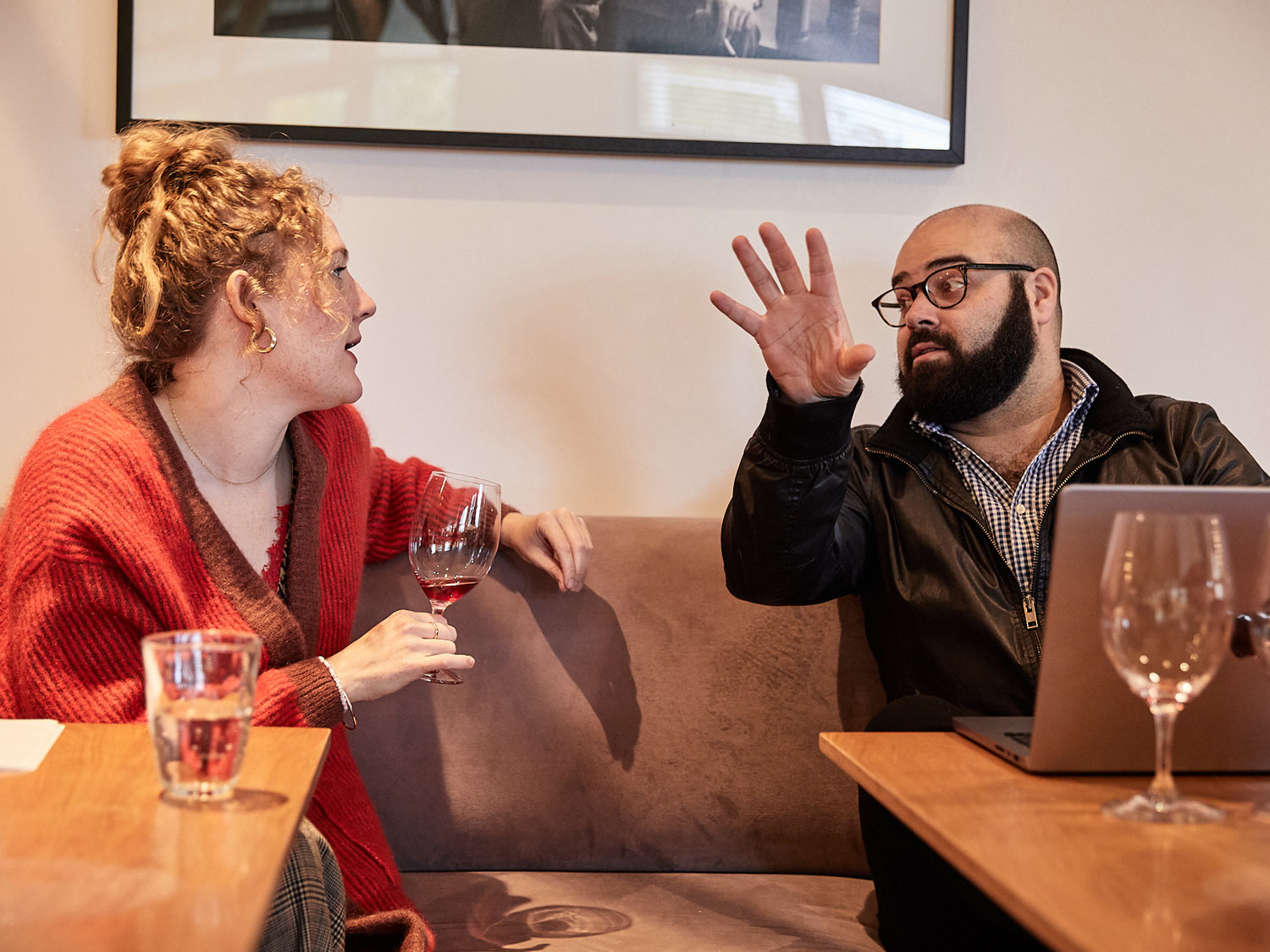
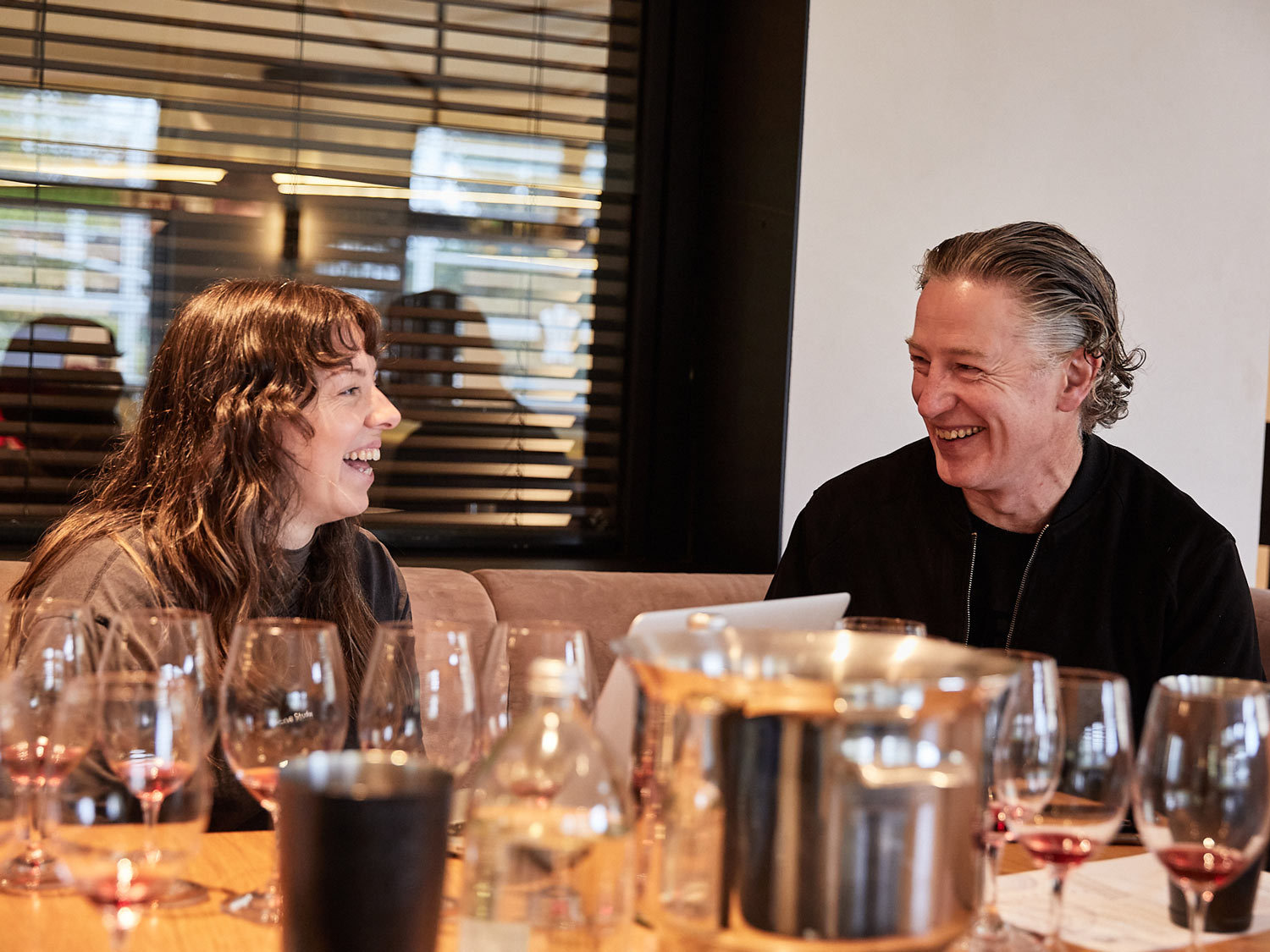
“That’s the thing, in youth, it is more syrah, but when they age, it becomes more pinot noir. It’s very interesting. It’s really in the middle.”
“It’s a real wine for bar food,” concurred Lapalus, “And that’s the success in France for Beajolais. Charceuterie and some little things like that – it’s the perfect wine for that. Seeing the trend of wine bars, it’s very suitable.”
“I think it’s interesting that the style lends itself to early consumption: so you buy grapes; you make it; you sell it quick; and you have these juicy delicious wines,” added Ryan. “Probably the next wave is a bit more structured in the ‘cru’ style – and there was a couple there today – but gamay can have real tannin, gamay can age, gamay can be serious.”
“I think there were some examples today where people were going in that direction,” replied Purser. “There’s really thoughtful winemaking there. Wines made with good oak and meant to be put down in the cellar.”
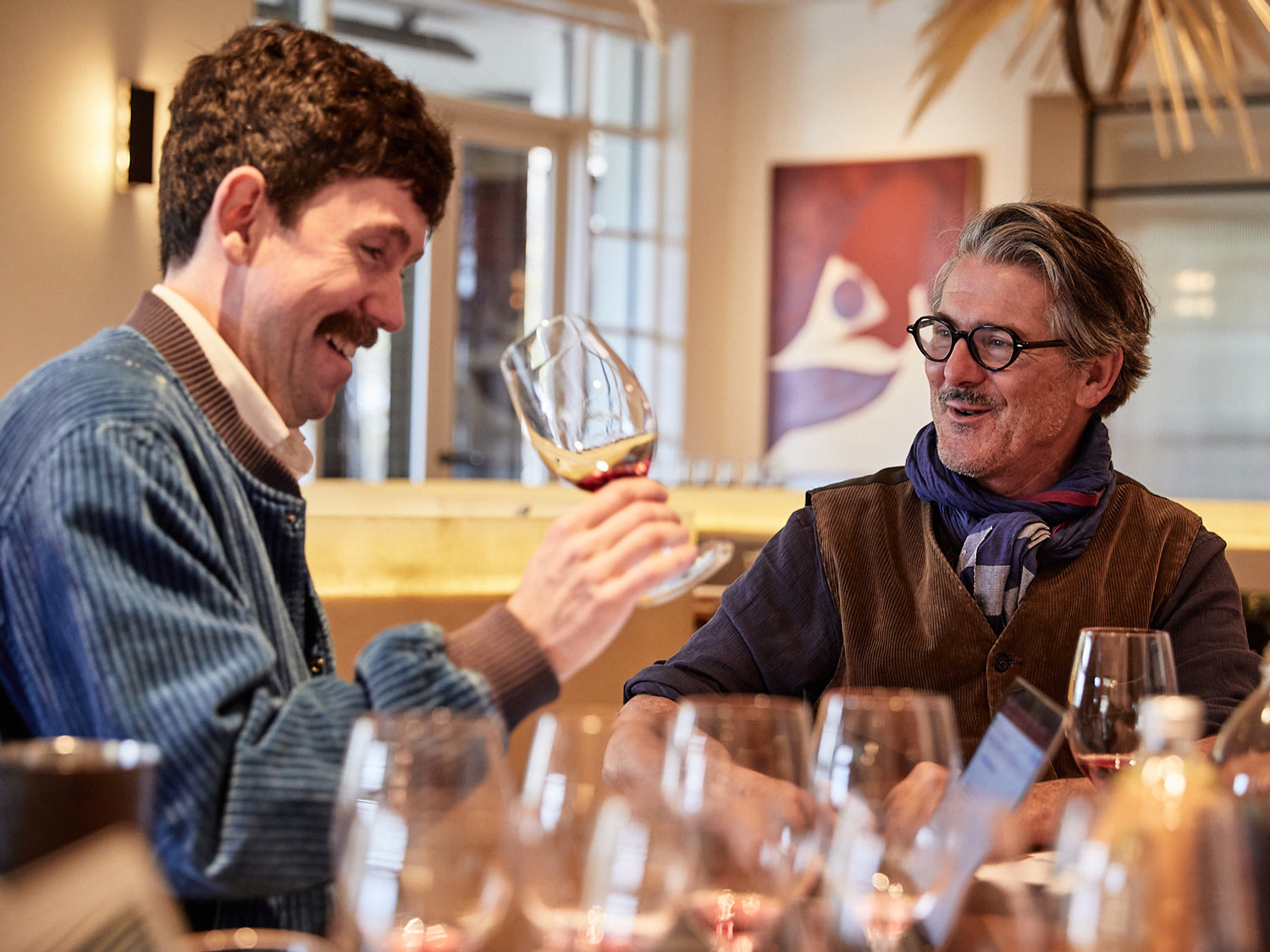
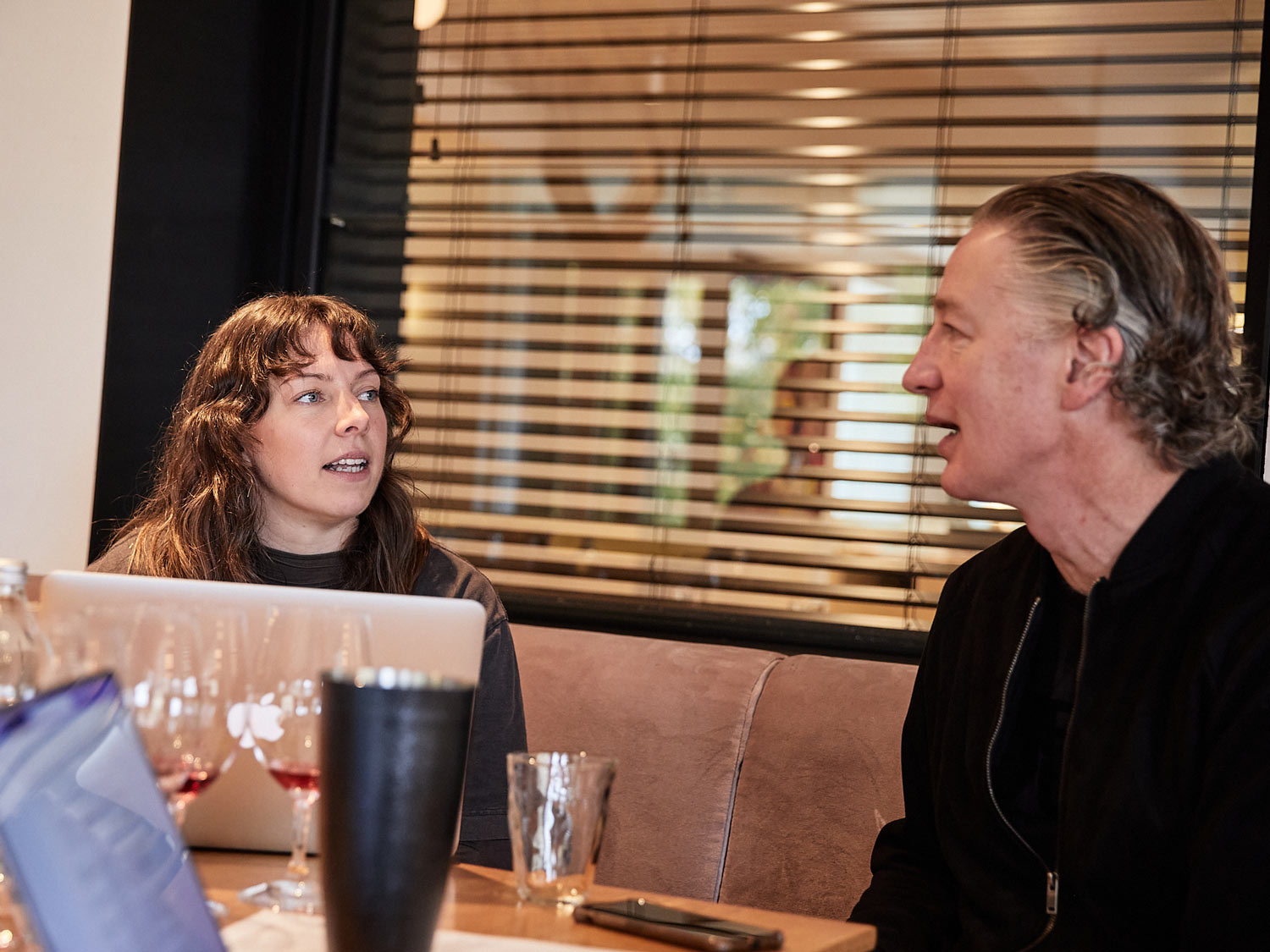
“It’s a real wine for bar food. And that’s the success in France for Beajolais. Charceuterie and some little things like that – it’s the perfect wine for that. Seeing the trend of wine bars, it’s very suitable.”
Rush, circling back to Lapalus’ comments about the tension between winemaking and regional characters, was inspired by the sense of Australian flavours in the wines that could have been cues to regionality. “I like that a lot of the flavour profiles I wrote down had lot of this distinctly Australian flair. I was getting these lovely eucalypty, minty, moments; or if there was a slight sweetening from the oak like a caramel, it made me think more of like leatherwood or box honey, or something like acacia even in these citrusy moments. I liked that, wherever these terroirs are in the blind lineup of wines today, they weren’t completely covered by winemaking or massive amounts of oak and massive amounts of ‘carbonic’ and stuff – there was these hints of Australianisms that I’m like: ‘I love that!’
“I was thinking of Australian fair, and flora and fauna. I’m like these are actually really smart pairing to be this kind of high acid, crispy… Even the charcuterie or the gamey moments that were there, I was like: ‘I’m getting maybe Wallaby’ or some kind of more modern Australian meats as opposed to just like salami. It just kept conjuring that lovely story that these are fun, fresh, easy drinking, for the newer consumer of wine in Australia, and they should be paired with the fun, fresh, exciting, exploration food scene.”
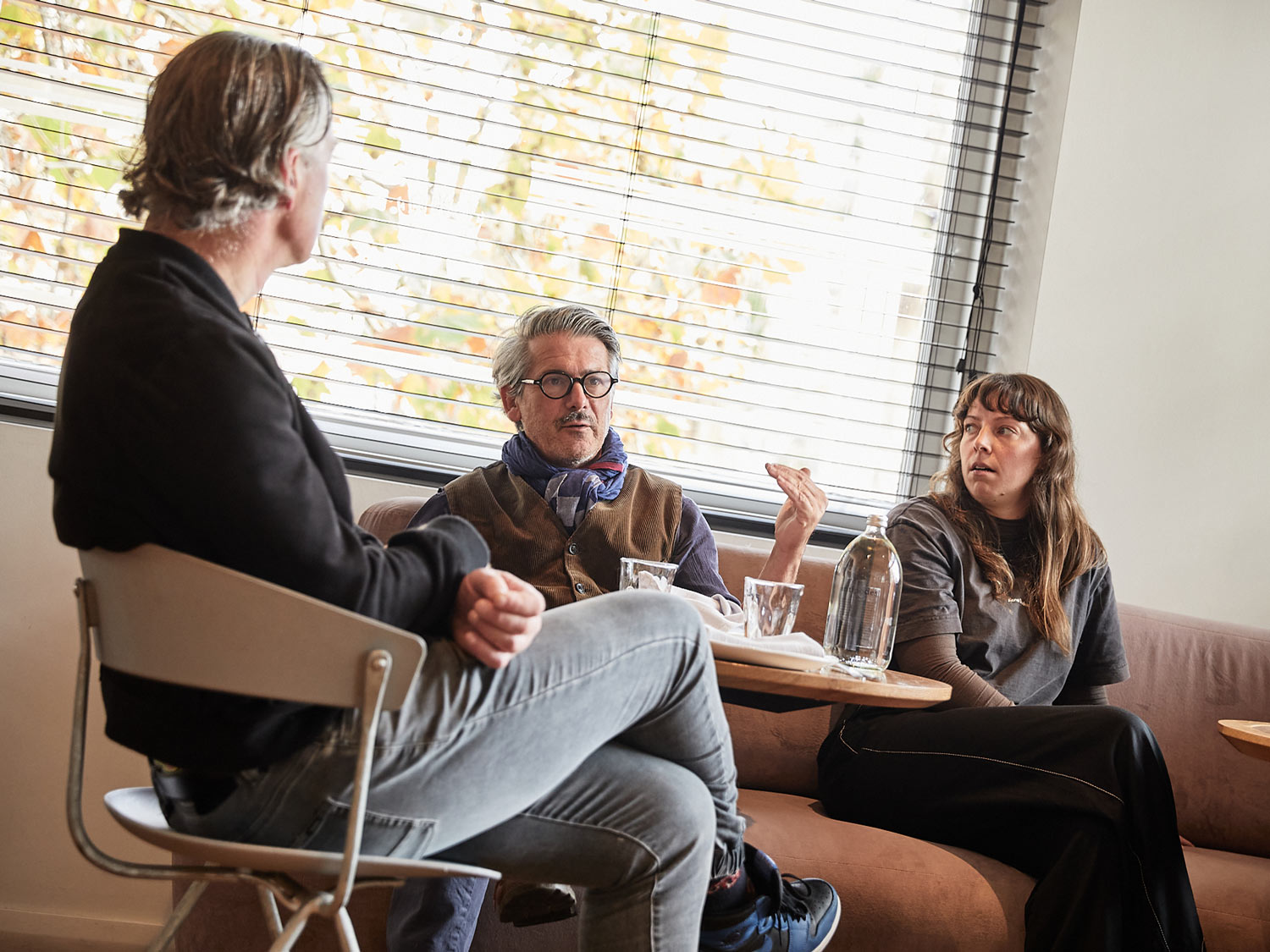

Ryan offered what he was particularly drawn to in the wines. “I think it’s good that it’s distinct from pinot noir. I think that tannin and the fruit profile can move just beyond red characters – it’s somewhere like a darker fruit, like a ferrous thing.”
“It’s very much more towards syrah,” added Lapalus.
“Yeah, it can start to creep into syrah,” continued Ryan. “Yeah, the best gamays sort of have a real dark intensity, even if they are red-fruited.”
“That’s the thing,” replied Lapalus, “In youth, it is more syrah, but when they age, it becomes more pinot noir. It’s very interesting. It’s really in the middle.”
The quality, and “the absolute pleasure”, of the lineup of gamays today made Aylward wistful. “I have an old friend on the Mornington Peninsula – David Lloyd from Eldridge Estate – who spent the best part of his career talking up gamay. I thought at the time he was mad, but I should have listened to him… we could have an acre or two of 10 year old vines producing fantastic wine now!”
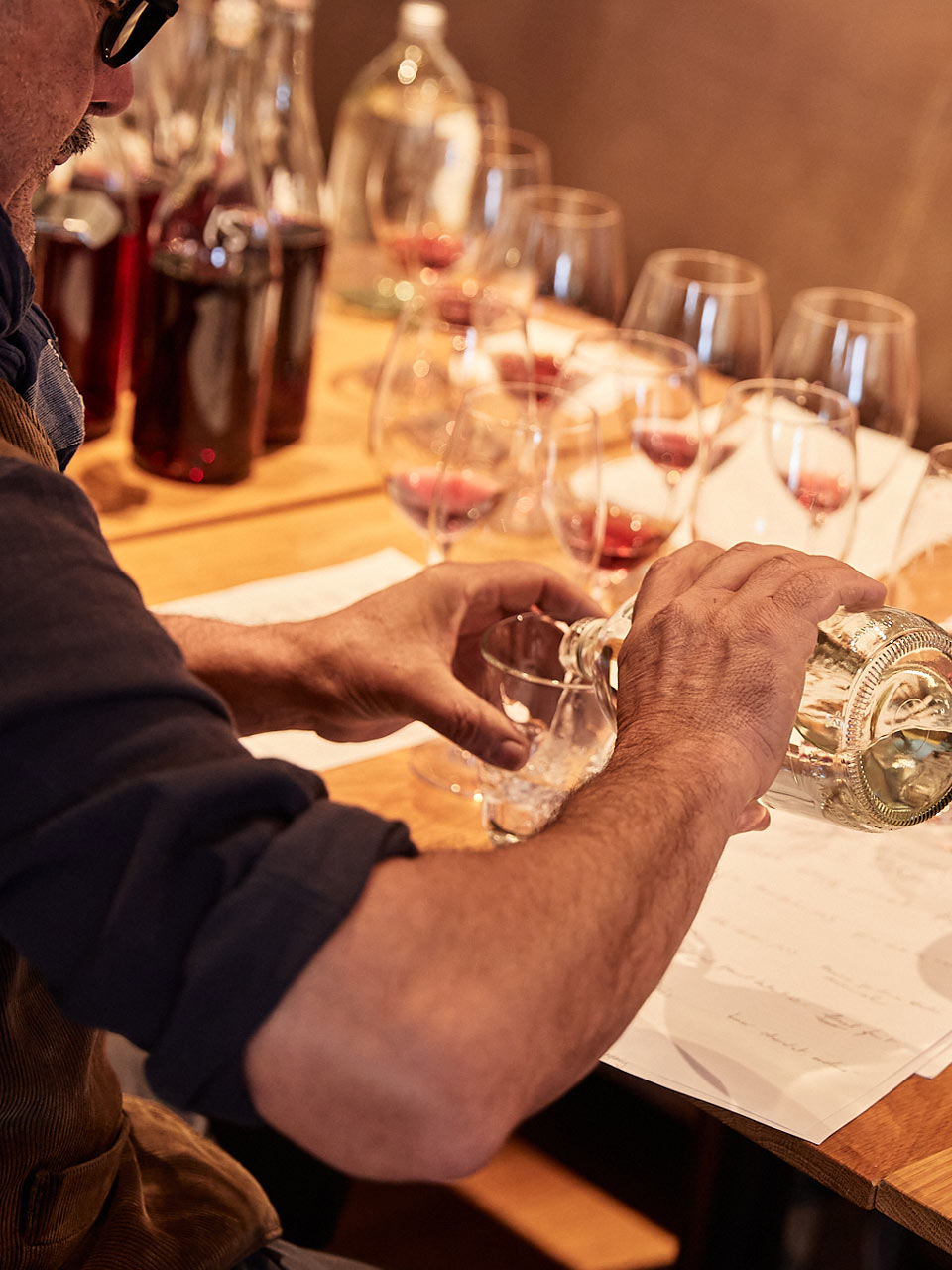
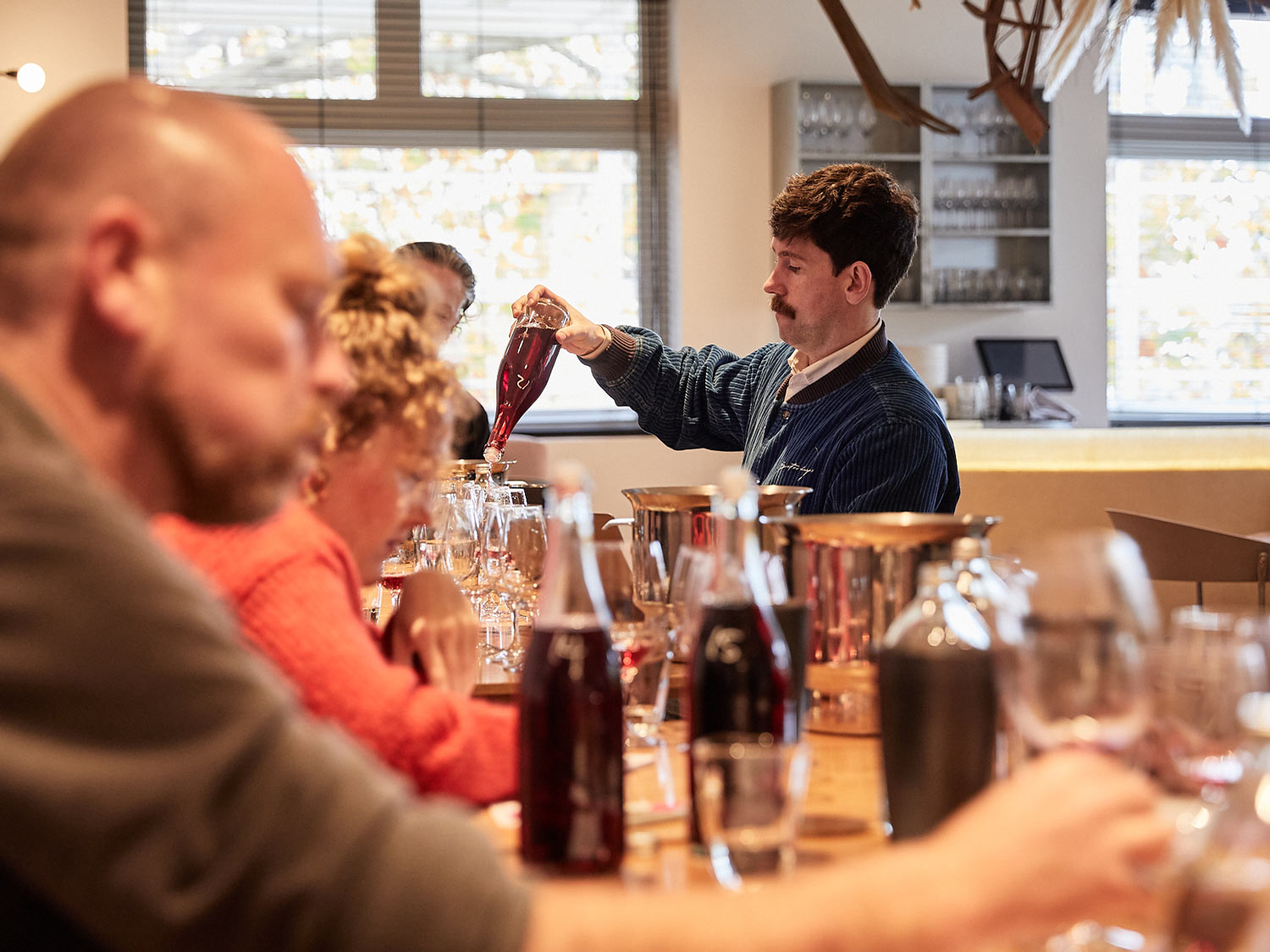
Gilles Lapalus is originally from Burgundy, and the third generation of his family to be involved with wine. He studied oenology in Dijon. Lapalus moved to Australia in 2001 to help establish the Sutton Grange Winery, near Castlemaine. After leaving Sutton Grange in 2015, he started his own labels, Maison Lapalus, and Bertrand Bespoke. In 2011, Lapalus had begun to experiment with native botanicals, which led to the founding of Maidenii with Shaun Byrne. Theirs was the first vermouth to employ Australian botanicals. He also co-authored ‘The Book of Vermouth’ in 2018 (Hardie Grant).
Chris Ryan is a senior wine buyer with Trader House restaurants, which encompasses Andrew McConnell’s suite of venues, including Gimlet, Cutler & Co., Supernormal and Marion. Ryan holds diplomas from WSET and the Association de la Sommellerie Internationale, is a French Wine Scholar and also Court of Master Sommeliers certified. He was crowned the Best Sommelier of Australia in 2021. Ryan also makes wine in the Yarra Valley under his Honky Chateau label.
Ellie Ash is a consultant Sommelier with extensive experience in the Melbourne hospitality scene. She holds an Advanced Certificate with the Court of Master Sommeliers and regularly participates as an Associate Judge across wine and whisky shows in Victoria and New South Wales. Ellie is also an award-winning Distiller, having led the blending team at The Gospel Whiskey to win best Australian Whiskey in 2023 and 2024 at the highly regarded International Wine and Spirits Competition.
Justin Purser is a winemaking and viticulture consultant who splits his time between the Mornington Peninsula and Beechworth. He also crafts wines under his own label, Purser Wines. A University of Adelaide graduate with a Bachelor of Oenology, Purser’s career has taken him across the globe, from Brezza in Piedmont to a four-year tenure at Domaine de Montille in Volnay. He spent a decade as the chief winemaker at Best’s Great Western and has also contributed his expertise to Fallen Giants, Stonier, and Dhiaga. Purser’s exceptional skills have earned him the Jimmy Watson trophy twice, in 2012 and 2021. He is also a regular judge at wine shows.
Matthew Jensen is the Group Sommelier at Renascence Group, overseeing the wine programs for Farmer’s Daughters, Victoria by Farmer’s Daughters, and Morena. After completing a degree in journalism and political science, Jensen discovered his passion for wine while working in a wine store, where he enjoyed combining his love for wine with engaging conversations. He holds certifications from the Court of Master Sommeliers and WSET Level 3. Jensen’s career includes notable roles such as Assistant Head Sommelier at Vue de Monde and Head Sommelier at Atlas Dining.
Mike Aylward is the winemaker at Ocean Eight Wines, based on the Mornington Peninsula. After earning a Science degree, Aylward honed his winemaking skills through an apprenticeship at his family’s business, Kooyong Estate, where he worked for five years until its sale to Port Phillip Estate in 2013. Shortly after, he launched Ocean Eight Wines. Aylward’s showstopping wines earned him the Young Gun of Wine Award in 2011. He is a prominent advocate for the Mornington Peninsula region, with a particular focus on pinot noir, chardonnay, and pinot gris.
Gabriella Rush is a wine retail and hospitality professional. Currently studying her WSET Diploma, she has worked vintage between Australia and France, notably with the likes of Mount Mary in Yarra Valley and Domaine Chavy Chouet in Burgundy. Her former retail roles in Melbourne have spanned from Dan Murphys as a Wine Merchant to Blackhearts North Fitzroy store Manager. Rush has also worked at Noble Rot Magazine in London, and has recently launched her own wine label, ByGab.
Sophie Darling is the winemaker at Darling Estate. Growing up around the family vineyard, her passion was cemented after working a vintage in Burgundy, including a stint at Le Grappin in Beaune. Darling is dedicated to land stewardship, working with her sister to grow exceptional fruit and craft small-batch wines. She continues the legacy of her grandfather and father at Darling Estate, focusing on producing high-quality wines that reflect their family’s dedication.
Please sign in or create account as candidate to bookmark this job
Please sign in or create account to save this search

Please sign in or create account as candidate to create a resume